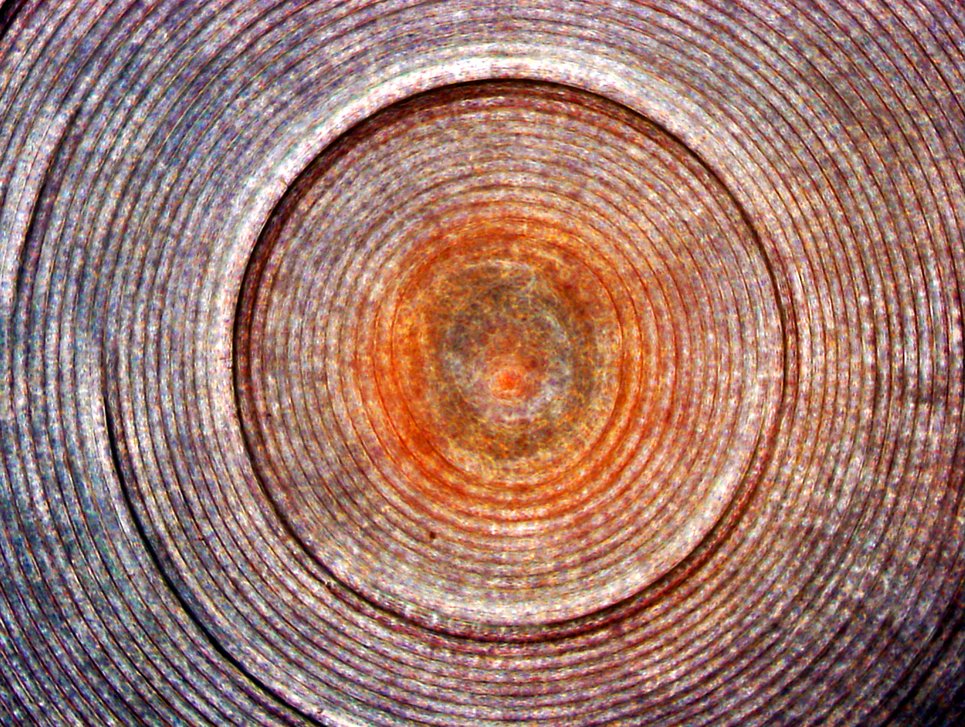Glass sponge as a living climate archive
An 11,000 year-old deep-sea sponge provides a record of past environmental changes in the sea
Climate scientists have discovered a new archive of historical sea temperatures. With the help of the skeleton of a sponge that belongs to the Monorhaphis chuni species und that lived for 11,000 years in the East China Sea an international team around scientists from the Max Planck Institute for Chemistry could show that the deep ocean temperature changed several times over the past millennia. As isotopic and elemental analyses showed, the sea water temperature in the vicinity of the sponge increased at least once from less than two degrees Celsius to six to ten degrees Celsius. These temperature changes were not previously known and are due to eruptions of seamounts.
The deep sea is full of unknown creatures, but it is new to find one with which one can trace back thousand years of climate changes. Researchers at the Max Planck Institute for Chemistry in Mainz have now determined the age of a more than two meters long and one centimeter thick glass sponge to be about 11,000 years. It is among the longest living animal species that exist today. From this animal`s skeleton the researchers can also read how its environment and the climate changed during its life.

The team that included amongst researchers from the Max Planck Institute for Chemistry in Mainz, researchers from China, and Switzerland, determined the age of the sponge needle, with the Latin name Monorhaphis chuni, based on the isotopic and elemental composition of its skeleton. It consists of silicon dioxide and is reminiscent of a glass fiber rod, made up of hundreds of fine lamellae which have grown annually like the rings of a tree from the inside outwards. The skeleton of the sponge was already found in 1986 at a depth of approximately 1,100 meters in the East China Sea. Here, these bizarre animals, that attach with one end to the seabed, live even today.
"Initially we recognized four areas under the electron microscope where the lamellae grew irregularly," says Klaus Peter Jochum, lead author of the now -published study. "They indicate time periods of increasing water temperature, for example due to the eruption of a seamount," adds the Mainz biogeochemist who was introduced to the fascinating research object through the sponge experts Werner E. G. Müller and Xiaohong Wang from the Institute of Physiological Chemistry of the University Medical Center Mainz. Manganese traces in the skeleton indicate periods of hydrothermal activity in the sea, as the manganese concentration in the water increases after the eruption of a seamount.

In addition, the researchers investigated the lamellae for trace elements and oxygen isotopes with the help of various mass spectrometers. The ratio of magnesium to calcium and the distribution of oxygen isotopes allow conclusions about the water temperature during the period in which the sponge incorporated these chemical elements into its skeleton. At a depth of 1000 meters and more the sea temperatures are rather uniform worldwide. The temperature in the vicinity of the glass sponge thus permits conclusions about both the global and the local temperature of the deep sea.
Analyses showed that the outer silica layer of the glass sponge had a temperature of 1.9 degrees Celsius at the time of its birth. As marine scientists know from other sources, this was the temperature in the deep sea 11,000 years ago. The chemical analyses also showed that the water temperature in the first thousand years of the sponge´s life remained almost constant. It then suddenly increased from about two degrees Celsius to six to ten degrees Celsius, and afterwards decreased again to today's sea water temperature of four degrees Celsius. Meanwhile there were further temperature changes, which are also evident through the irregular growth of the lamellae.
The local temperature fluctuations in the East China Sea, which the researchers determined with the help of the glass sponge, were not previously known. The glass sponge thus allows insights into previously unknown climate change. In order to obtain more precise information about the deep sea´s past climate, the researchers want to investigate the sponge needle and other glass sponges for silicon isotopes. They thus help to give climate researchers a more accurate data base for modeling of historical and current climate change.

